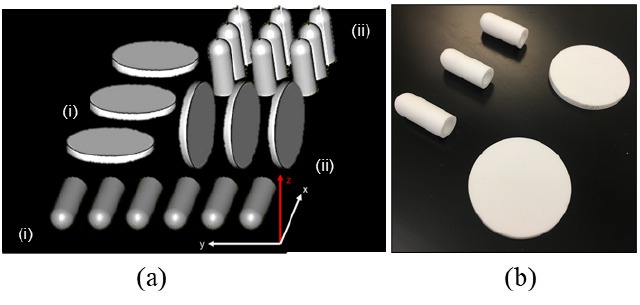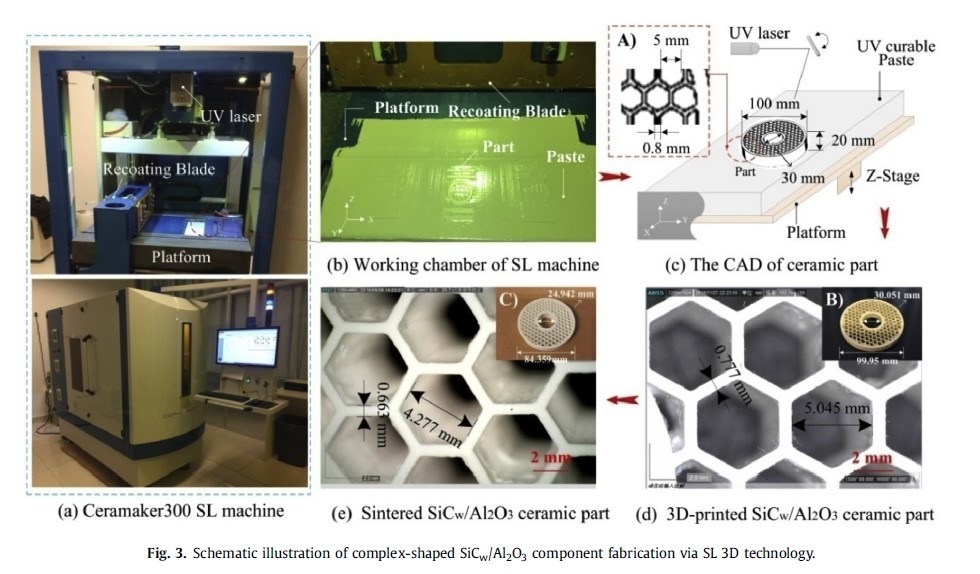A serious amount of scientific research have been published on additive manufacturing for ceramics with 3DCeram SLA technology. As we know 3D printing offers so many opportunities for developments. It has became a flourishing field for research topics. Our purpose here is to give you the opportunity to read scientifics articles regarding 3d printing, stereolithography, technical ceramics and all kind of applications.
Building parts with an optimized design allows more efficiency in their applications, as it has been demonstrated a hundred time in the aeronautics field, where a printed part allows more compact assemblies with a better optimal integration targeting a significant reduction in the total mass.
| « Effect of printing strategies on forming accuracy and mechanical properties of ZrO2 parts fabricated by SLA technology », this is the title for a study conducted on 3DCeram printer with the zirconia paste. Stereolithography (SLA) is a regurlarly used ceramic 3D printing technology because of its accuracy. This study is based on the SLA technology and zirconia paste to verify the stability of the thermo-mechanical properties. In order to conduct this study, the forming capability of the laser to print sample in three-dimensional directions was tested. That's not all, mechanical tests (35x4x3mm bars) were done on 3DCeram's Zirconia material printed with the C900 FLEX 3D printer. The tensile strength (<1000MPa) and good hardness (>13 GPa) show excellent results. To finish with, the densification is around 98% after sintering. To read the complete study, follow the link | |
| Fracture Resistance of Additively Manufactured ZirconiaCrowns Zirconia implants made by SLA has been tested in mechanical strength compared to milled Zirconia implants. Our material has very good mechanical properties. The tensile strength in SLA is very close that Zirconia used in isostatic pressing. Read the study | |
Evolution of thermo-mechanical in the process of alumina manufacturing using laser stereolithography technique Some customers have tested 3DCeram alumina formulation.To do so, they develop several simulation models to anticipate and predict mechanical and thermal properties. They carried out the mechanical and thermal experiments and they conclude that the experiment is very close to the simulation which is encouraging in predictive terms, to forecast the mechanical and the thermal properties for the ceramic. To read the complete study | |
| | Research on zirconia and its behaviour The purpose here was to aknowledge that 3D printing with SLA technology will impact the structural anisotropy. Here samples have been made by varying the build direction of parts in zirconia, in order to evaluate the wear behavior and the composition in respect with the architecture of the part. All the combinations whatever the orientation, horizontal or vertical, showed equivalent wear coefficients and phase transformation. Read more about Zirconia  |
Fabrication and characterization of SiC whiskers toughened Al2O3 paste for stereolithography 3D printing applications A study that demonstrates the development of a formulation that combines SIC with whiskers and photosensitive organic compounds. A complex shaped part printed on C900 FLEX with these materials, SiCw/Al2O3, demonstrated high flexural strength, fracture toughness, hardness and relative density . To dig the topic read more...  | |